When do they start and how many chickens rush
The age at which the functional maturity of the chicken breeding system begins depends on the breed, the type of diet used and the conditions provided by the breeder for the herd. In certain areas of the breeder's activity (egg and meat-egg), the total time during which the farmer profits from breeding hens depends on the speed at which the bird reaches this age. The number of eggs contained in the body of birds determines the potential for obtaining eggs over 15 years. However, breeders do not keep chickens for such a period of time for two reasons.
- Firstly, in the case of egg and meat-and-egg farming, meat, which is a side source of profit after the birds reach 3-4 years of age, changes its structure, acquiring more rigid fibers.
- Secondly, after the hen reaches reproductive age, an interval of active bearing capacity is noted, which lasts, depending on the breed, within 1-1.5 years, after which experts note an annual decrease in the productivity of layers within 15-20% per year.
These data indicate that the time during which the active stage of the egg-laying period lasts in chickens is a very limited period. Breeders offer breeders for breeding hybrid breeds of birds, which differ from known breeds in the large number of eggs brought, early maturation and the beginning of laying. However, the load on the underdeveloped reproductive system of chickens can lead to the production of eggs without a shell, the release of fruits with a lower weight (45 g), the development of problems with the musculoskeletal system and depletion of the body.
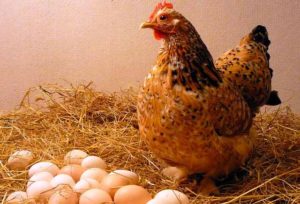
In most cases, breeders prefer to increase the productivity of the herd during the active production interval. At the same time, their efforts are aimed at creating conditions of detention and using a diet that have values close to optimal indicators. The use of such measures can increase the number of clutches during the reporting period, and theoretically may slightly increase the duration of the bearing capacity in birds.
Content
When pullets start to lay, and what determines the timing of the start of the egg production period
So, the necessary conditions for the start of laying eggs by chickens are the achievement of maturity of the reproductive and musculoskeletal systems. In this regard, experts emphasize that the onset of laying in layers is directly related to their body weight.
Note! A clutch of eggs that is safe for the bird's body is ensured if the hen lays the first egg, having 75% of the mass of an adult. At the same time, pullets should have a developed musculoskeletal system, given the fact that during oviposition, most of the nutrients and minerals will be consumed by the body for the formation of yolk, protein and egg shell.
The time it takes for different breeds to reach the formation of the reproductive system and gain an adequate supply of nutrients depends on factors such as:
Breed, which in turn determines the main direction of the breeder's economic efforts. So, if individuals for which the main activity is the production of eggs bear the first fruits when they reach 4.5-5.5 months, then the chickens of the meat and egg direction mature in 6.5 months, and meat-type layers provide a stable supply of eggs only in the age of 7-8 months. Experienced breeders take into account the time of chickens entering the stage of active clutch in order to timely purchase young livestock.
So rocksegg direction, including Russian White, Hamburg, Laurent Brown, Hein-Line, Tetra TL, Czech golden, Ukrainian ushanka, Leghorn bring their first clutches at the age of 17-20 weeks from the moment of birth. The advantages of breeding chickens of this variety include high egg production rates, and the disadvantages of farmers include the rapid depletion of the bird's body, which occurs at the age of 1.5 years.
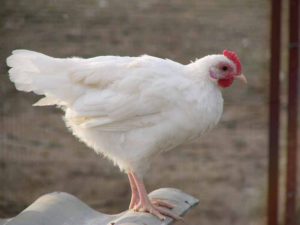
Layersmeat and egg directionsuch as Rhode Island, Orlovskaya, Augsburger, Jubilee, Kuchinsky, Sussex and New Hampshire provide average productivity when entering the active clutch phase at 21-24 weeks of age.
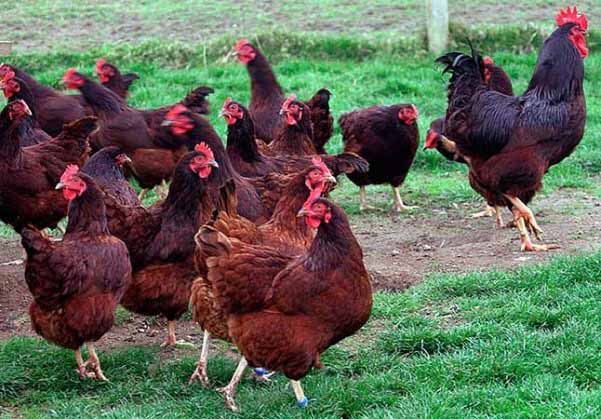
Chickensmeat direction, for which the production of offspring becomes relevant at the age of 7-8 months are distinguished by a strong body constitution and a large body weight, reaching 6.5-7 kg. At the same time, at a later start of oviposition, the eggs laid by them are distinguished by a greater mass, fluctuating in the range of 65-75 g. The productivity of these species of birds leaves much to be desired, since for most of the breeds, including Plymouthrock, Brahma, Cochinquin and Cornish, it is within the range of 100-130 eggs / year.
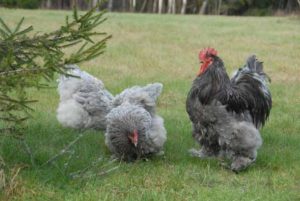
Diet provides mass gain and should provide for the intake of a balanced complex of essential nutrients, vitamins and minerals into the body of a young laying hen.
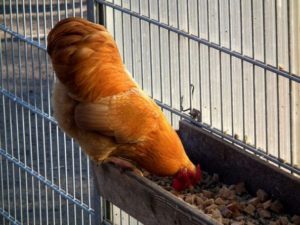
Important! Experts emphasize the importance of using food for feeding chickens, which, in addition to grain and compound feed, should include wet mash, waste from slaughterhouses and milk processing enterprises, gravel, shells, sand and wood ash.
Conditions of detention have a direct impact on the rate of formation of organs of the reproductive system in pullets. So, under unfavorable temperature conditions, the bird is forced to spend part of the stored substances and energy for warming. With a more favorable microclimate in the chicken coop, the accumulation of useful components and their transition to the mass of the bird occurs, as a result of which it reaches the required mass within a shorter period of time.
Note! Among the conditions that have a critical impact on egg-laying in chickens, there are temperature, humidity of the chicken coop, the absence of stressful situations, timely antiparasitic and sanitary treatment, ensuring the daily exercise of the livestock and sufficient daylight hours.
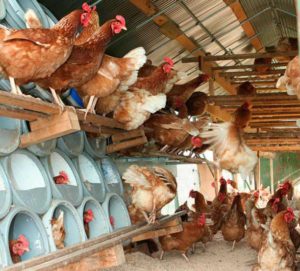
The time of the appearance of the young affects the onset of laying in pullet hens. Experts say that chickens born in the winter or early spring period of the year are distinguished by an earlier onset of laying. They associate this feature with a variety of diets in spring, characteristic of the period of their growing up.
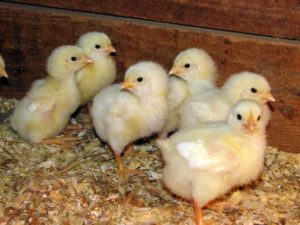
Important! Another part of the farmers complains that chickens born in autumn and summer may have a longer period of time before entering the stage of active egg production, which, under unfavorable microclimate conditions, can drag on until the beginning of spring.
How many years chickens lay, the period of their egg production: features of different breeds
The length of time a farmer can receive eggs depends on the direction, conditions and breed of chickens:
- Layers egg direction maintain active productive capacity for 1.5-2 years old. Such a short period of reproductive capacity in birds of this species is explained by the loads experienced by their body when providing 240-300 clutches / year.
- Chickens meat and egg type provide egg-laying throughout 3.5-4 years old.
- Birds meat direction they are carried rarely, no more than 2-3 pcs / week, in this regard, they can ensure the flow of eggs within 2-3 years old. Experts say that with proper organization of the maintenance of this type of pullets, they can bring up to 120-130 eggs / year.
Note! With the potential ability to maintain productivity at the level of several eggs per week for egg and meat-egg breeds after they reach the age of 5 years, experienced farmers consider it inappropriate to keep laying hens for more than 2-3 years. They explain this by the fact that the peak of productivity of most chicken breeds passes within 1-1.5 years from the beginning of active clutch. After that, the norms of feed spent on the maintenance of layers are not justified by the number of eggs they bring.
Among the features of productivity due to the breed of chickens for birds with the highest egg production, experts note:
- Lohmann-Brown, which enter the phase of active oviposition at the age of 5.5 months and retain this ability up to 2.5 years, bringing the farmer up to 300-320 pcs / year, with an average egg weight in the range of 63-64 g.
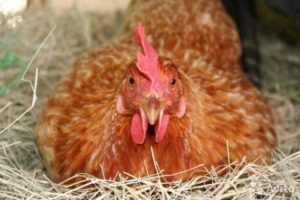
- Tetra SL, bring from 300 to 310 eggs / year when entering the period of the beginning of clutch at the age of 5.5-6 months and while maintaining this ability for 1.5-2 years.
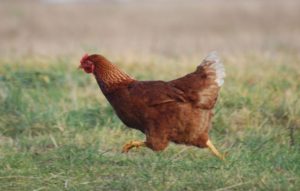
- Hisex provide egg-laying in the range of 300-350 pcs / year, depending on the color of the laying hen feathers. With an average egg weight of 60 g, these birds have a small mass and a delicate constitution, which must be taken into account when arranging a chicken coop for keeping individuals of this species.
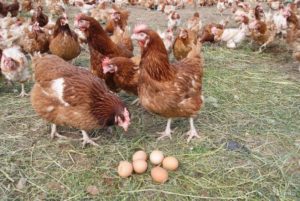
- Leghorn characterized by an early onset of oviposition, beginning at 18-20 weeks and lasting for 1-1.5 years with an average carrying capacity of 230-240 eggs per year.
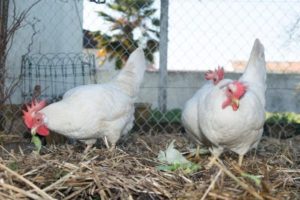
The time interval during which chickens will lay eggs depends on their breed and direction. Breeders are trying to speed up the onset of egg-laying in chickens, but it should be noted that receiving eggs just a few weeks earlier than the due date can be fraught with early depletion of the organs of the laying hen's reproductive system and obtaining products with low consumer characteristics. Experienced farmers try to create close to optimal conditions for feeding and keeping layers to increase the number of eggs brought by birds and laying time. At the same time, experts note that with the potential ability to perform clutches even at the age of 5-7 years, keeping chickens for more than 2-3 years is irrational, since the farmer's expenses for keeping the livestock in this case are not compensated by the number of eggs produced by the herd.
Video: when chickens begin to lay eggs

